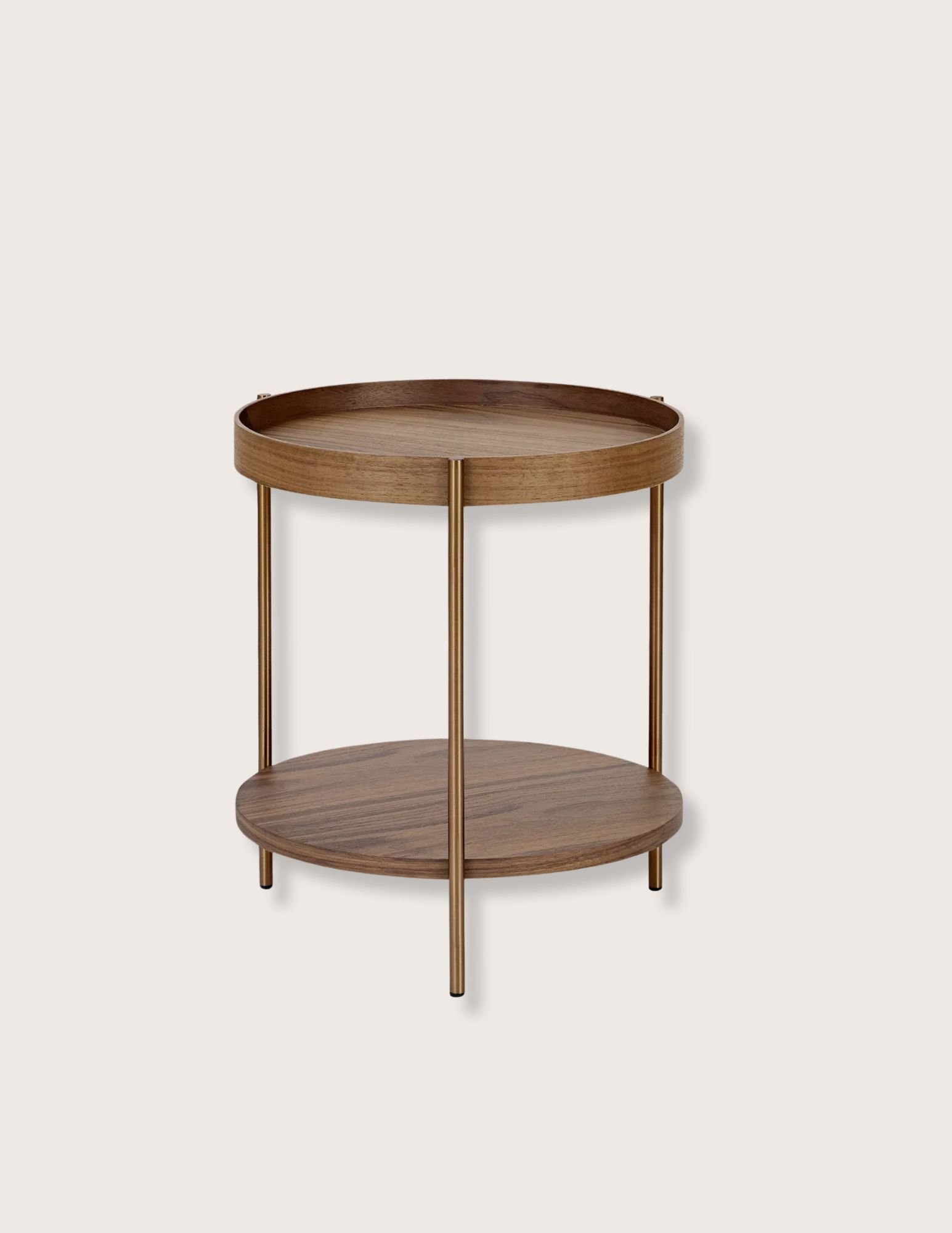 Image 1 of 5
Image 1 of 5

 Image 2 of 5
Image 2 of 5

 Image 3 of 5
Image 3 of 5

 Image 4 of 5
Image 4 of 5

 Image 5 of 5
Image 5 of 5






Vineyard Outdoor Dining Set
Details
With its beautiful acacia wood surfaces and sturdy metal legs, our Vineyard Outdoor Dining Set is exactly what you've been looking for to enhance your summer dining experience. The spacious table is nearly 60 inches long and more than 35 inches wide, offering plenty of room for table settings and decoration. The gorgeous, tropical hardwood top is dense and durable with an oil finish that promises long term enjoyment. Coupled with a powder-coated metal frame, the set is a wonderful mix of traditional farmhouse and modern industrial styles, a true addition to your outdoor decor and a fitting centerpiece for brunches, parties, dinners and other events. And seating 6, the set is ideal for gatherings of any size. A warm country element with an industrial twist, the Vineyard Outdoor Dining Set is the perfect touch of style for your at-home getaway. Pair it with other pieces from the Vineyard Collection to turn your outdoor space into something special.
Editors' Note
The Vineyard Collection is named for the island of Martha's Vineyard in Massachusetts which, like New York's Sag Harbor, has stood for generations as a summer oasis for African American families. The tradition began in 1912 when Charles and Henrietta Shearer opened Shearer Cottage, one of the first establishments in the area to cater to Black travelers and families. Former teachers, educated at the Hampton Normal and Agricultural Institute (later Hampton University) in Hampton, Virginia, Charles was born into slavery on a Virginia plantation, while Henrietta (née Merchant) was born free to one of the oldest free Black families in Lynchburg, Virginia. The couple first arrived in Massachusetts in 1891. By 1903 they owned two properties in the Oak Bluffs neighborhood near the island's northern tip. The first business they opened there was a laundry where Henrietta quickly gained a reputation for her sophisticated work. The inn — originally an addition to the Shearer home on the island — was an immediate success, offering not only lodgings, but dining, catering services, and a horse-drawn wagon to provide transportation to guests. Other notable establishments opened during this time include Aunt Georgia's House (now, the Tivoli Inn), founded by Mrs. Georgia O’Brien and Ms. Louisa Izett, as well as a guest house run by Mrs. Anthony Smith. Early frequenters of the island included Black music composer Henry T. Burleigh, famed for his introduction and adaptation of African American spirituals into the lexicon of American music. In part through his considerable influence, the island became popular with many leading Black Americans, especially the Shearer Cottage where he was known as "Uncle Harry" among the children. The island soon became a destination for people such as William H. Lewis, the first Black US Assistant Attorney General, and Dr. Solomon Carter Fuller, America's first Black psychiatrist. The latter's wife, Meta Vaux Warrick Fuller, was among the most distinguished sculptors of the Harlem Renaissance. Along with them, many other Renaissance luminaries spent their summers at "The Vineyard," including Langston Hughes, Adam Clayton Powell Jr., and Dorothy West, considered the last great writer of the period. In 1937, Powell, a future congressman, and his wife, the former Cotton Club dancer and Broadway performer, Isabell Washington Powell, purchased the "Bunny Cottage," now known as the Powell Cottage, at which the couple entertained friends such as Matthew Henson, the African American explorer famed for reaching the North Pole with Robert Peary in 1909, and for whom a lunar crater was named in 2021. Similarly, the 18-room Victorian mansion owned by Joe Overton, now known as "Villa Rosa," was known as the "Summer White House," for Black America when Overton was in residence. As one of New York's first Black labor organizers and president of the city's NAACP chapter, Overton was easily among New York's most influential African Americans of the time. During the family's tenure, the house, which is still considered one of the finest examples of Victorian architecture on the island, hosted high-profile guests from Martin Luther King Jr. to Fidel Castro. By the 1950s, Martha's Vineyard was a national summer destination for middle-class Black families. The tradition continues today with Spike Lee, Oprah and the Obamas among the many who make time each summer to call the island home.
Details
With its beautiful acacia wood surfaces and sturdy metal legs, our Vineyard Outdoor Dining Set is exactly what you've been looking for to enhance your summer dining experience. The spacious table is nearly 60 inches long and more than 35 inches wide, offering plenty of room for table settings and decoration. The gorgeous, tropical hardwood top is dense and durable with an oil finish that promises long term enjoyment. Coupled with a powder-coated metal frame, the set is a wonderful mix of traditional farmhouse and modern industrial styles, a true addition to your outdoor decor and a fitting centerpiece for brunches, parties, dinners and other events. And seating 6, the set is ideal for gatherings of any size. A warm country element with an industrial twist, the Vineyard Outdoor Dining Set is the perfect touch of style for your at-home getaway. Pair it with other pieces from the Vineyard Collection to turn your outdoor space into something special.
Editors' Note
The Vineyard Collection is named for the island of Martha's Vineyard in Massachusetts which, like New York's Sag Harbor, has stood for generations as a summer oasis for African American families. The tradition began in 1912 when Charles and Henrietta Shearer opened Shearer Cottage, one of the first establishments in the area to cater to Black travelers and families. Former teachers, educated at the Hampton Normal and Agricultural Institute (later Hampton University) in Hampton, Virginia, Charles was born into slavery on a Virginia plantation, while Henrietta (née Merchant) was born free to one of the oldest free Black families in Lynchburg, Virginia. The couple first arrived in Massachusetts in 1891. By 1903 they owned two properties in the Oak Bluffs neighborhood near the island's northern tip. The first business they opened there was a laundry where Henrietta quickly gained a reputation for her sophisticated work. The inn — originally an addition to the Shearer home on the island — was an immediate success, offering not only lodgings, but dining, catering services, and a horse-drawn wagon to provide transportation to guests. Other notable establishments opened during this time include Aunt Georgia's House (now, the Tivoli Inn), founded by Mrs. Georgia O’Brien and Ms. Louisa Izett, as well as a guest house run by Mrs. Anthony Smith. Early frequenters of the island included Black music composer Henry T. Burleigh, famed for his introduction and adaptation of African American spirituals into the lexicon of American music. In part through his considerable influence, the island became popular with many leading Black Americans, especially the Shearer Cottage where he was known as "Uncle Harry" among the children. The island soon became a destination for people such as William H. Lewis, the first Black US Assistant Attorney General, and Dr. Solomon Carter Fuller, America's first Black psychiatrist. The latter's wife, Meta Vaux Warrick Fuller, was among the most distinguished sculptors of the Harlem Renaissance. Along with them, many other Renaissance luminaries spent their summers at "The Vineyard," including Langston Hughes, Adam Clayton Powell Jr., and Dorothy West, considered the last great writer of the period. In 1937, Powell, a future congressman, and his wife, the former Cotton Club dancer and Broadway performer, Isabell Washington Powell, purchased the "Bunny Cottage," now known as the Powell Cottage, at which the couple entertained friends such as Matthew Henson, the African American explorer famed for reaching the North Pole with Robert Peary in 1909, and for whom a lunar crater was named in 2021. Similarly, the 18-room Victorian mansion owned by Joe Overton, now known as "Villa Rosa," was known as the "Summer White House," for Black America when Overton was in residence. As one of New York's first Black labor organizers and president of the city's NAACP chapter, Overton was easily among New York's most influential African Americans of the time. During the family's tenure, the house, which is still considered one of the finest examples of Victorian architecture on the island, hosted high-profile guests from Martin Luther King Jr. to Fidel Castro. By the 1950s, Martha's Vineyard was a national summer destination for middle-class Black families. The tradition continues today with Spike Lee, Oprah and the Obamas among the many who make time each summer to call the island home.

Additional Details
6 chair outdoor dining set
Color: Wood, Iron
Material: Acacia Wood, Metal
Dimensions:
- Table: 59.1" L x 35.4" W x 29.5" H
- Chairs: 22" L x 21.5" W x 34.3" H
- Seat width: 16.3"
- Seat depth: 17.7"
Care: Protect with a waterproof cover when not in use.
Arrives in 3 packages that may arrive separately
Assembly required
Imported
Made to order
Ships to the continental US in 3-4 weeks


































